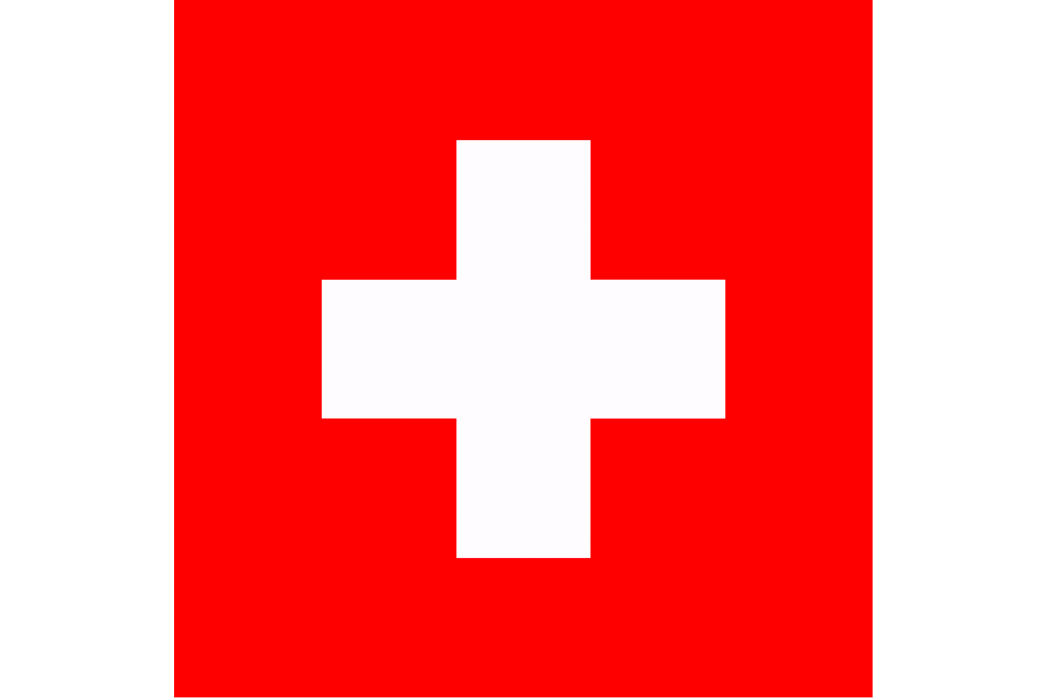The Swiss flag consists of a bold white equilateral cross at the center on a pure red background. There are two variations of the Swiss flag: a square one with the length and width at a ratio of 1:1 that represents the national flag and rectangular version of length to width ratio of 3:2 used by the Swiss navy and civilian ships. The Swiss national flag is simply known as Swiss. The cross does not touch any edge or corner of the flag. The Swiss Federal Council officially introduced the flag in 1889 while the rectangular version officially came into use in 1953.
The white cross symbolizes Switzerland’s Christian heritage which is also present in the national anthem. The red background represents the blood that got spilled in order to uphold their faith. Before gaining autonomy, the 1230 German emperor gave the cantons the right to use the flag. In 1291, the canton (Uri, Unterwalden, and Schwyz) formed the Swiss Confederation that used the imperial war flag of the former Holy Roman Empire that had a similar cross at the center and resembled the current Swiss flag but with a few variations.
No one in particular designed the Swiss flag. The Cantons borrowed the flag from the former Holy Roman Empire during the Middle Ages and since then, the flag has undergone several modifications in terms of the size of the cross and the shade of the red color. Over that period, the banner, as it was then, became an identity of Swiss soldiers. However, Swiss Henry Dunant developed the Red Cross and Red Crescent flags from the Swiss flag.
The definitive origin of the symbols of the Swiss flag goes back to the twelfth-century legend of the Arma Christi that the cantons respected and allegedly displayed on their red uniforms with permission from King Rudolph I. The use of a flag to represent the Confederacy began in 1422 but the red cloth was an isosceles triangle. At the time, the cross touched the edges of the triangle with the longer side touching the furthest corner of the triangle, and by 1470, the Swiss changed the flag to the modern square although the red color was brighter and the cross thinner. However, years of peace left the flag unused until the sixteenth century when the flag reappeared but with the cross at the top corner and other variations had a red-flamed-background. In 1815 General Niklaus Franz von Bachmann returned the use of the square flag for military purposes until 1889 when the Federal Council officially adopted the flag as the national flag.
This page was last modified on May 1st, 2018
More on Graphicmaps

Published on 2019-11-06
What is a Trade Embargo?

Published on 2019-11-04
Which Two Countries Used to Have the Same Flag?

Published on 2019-09-16
What Is the Only Two-Sided State Flag?

Published on 2019-09-16
Which Country Flag Looks Like the Texas Flag?

Published on 2019-08-29
Flags That Resemble the US Flag

Published on 2019-08-20
